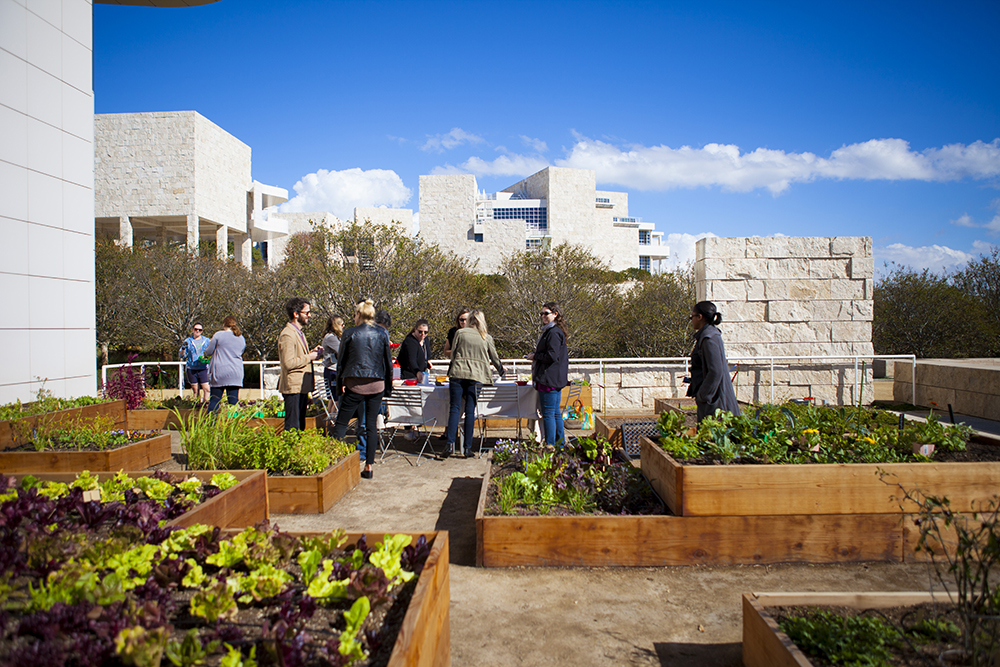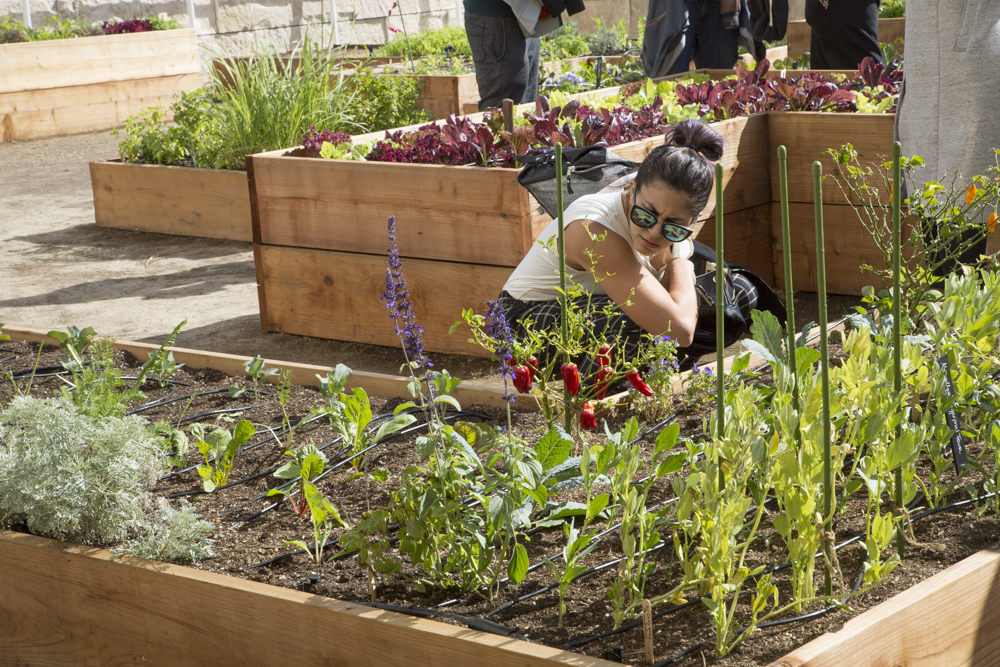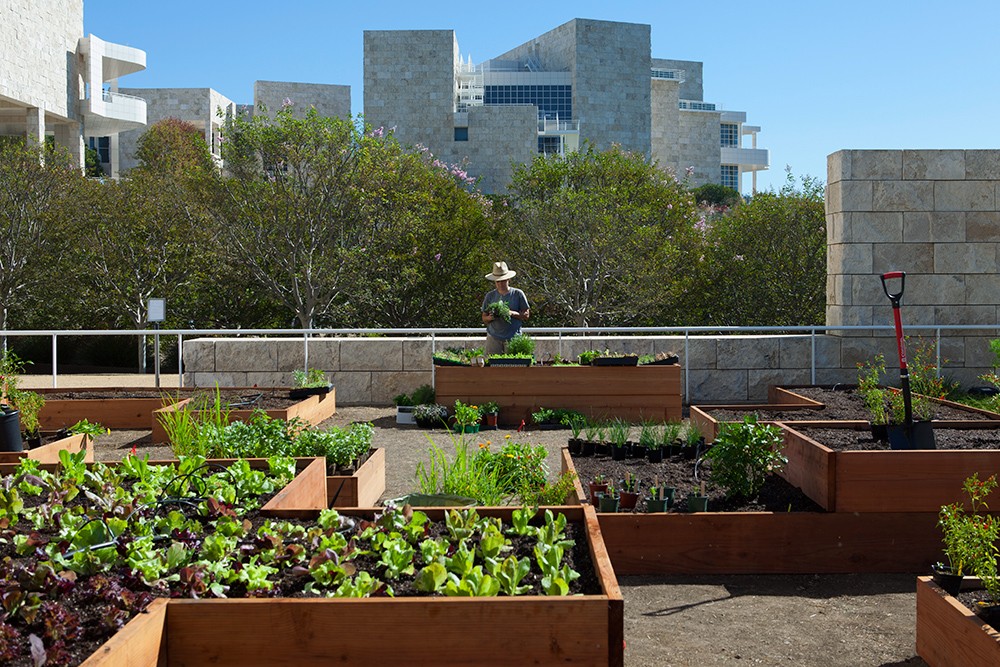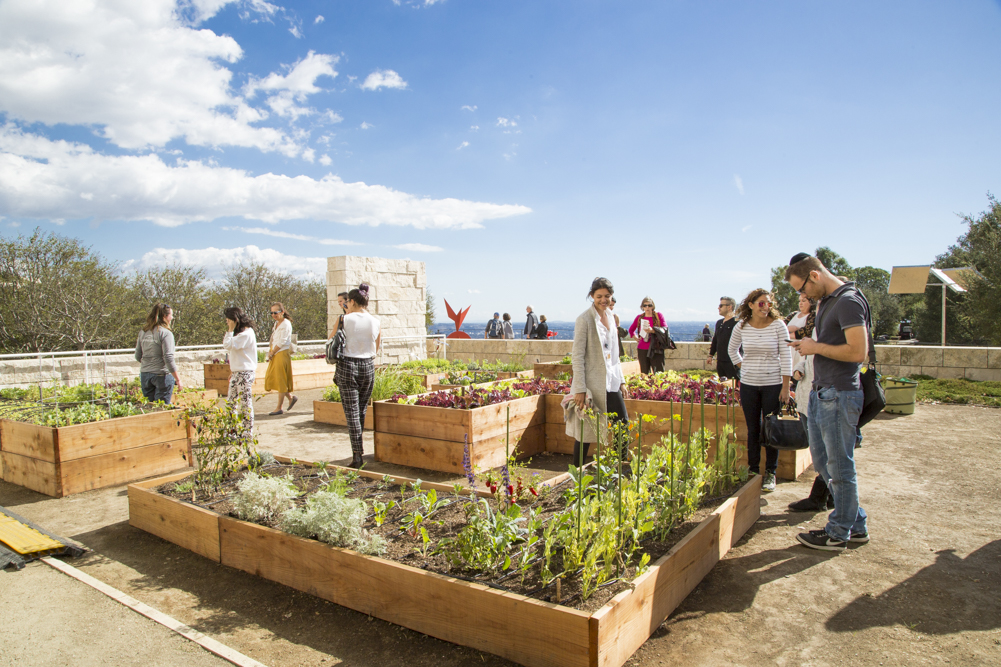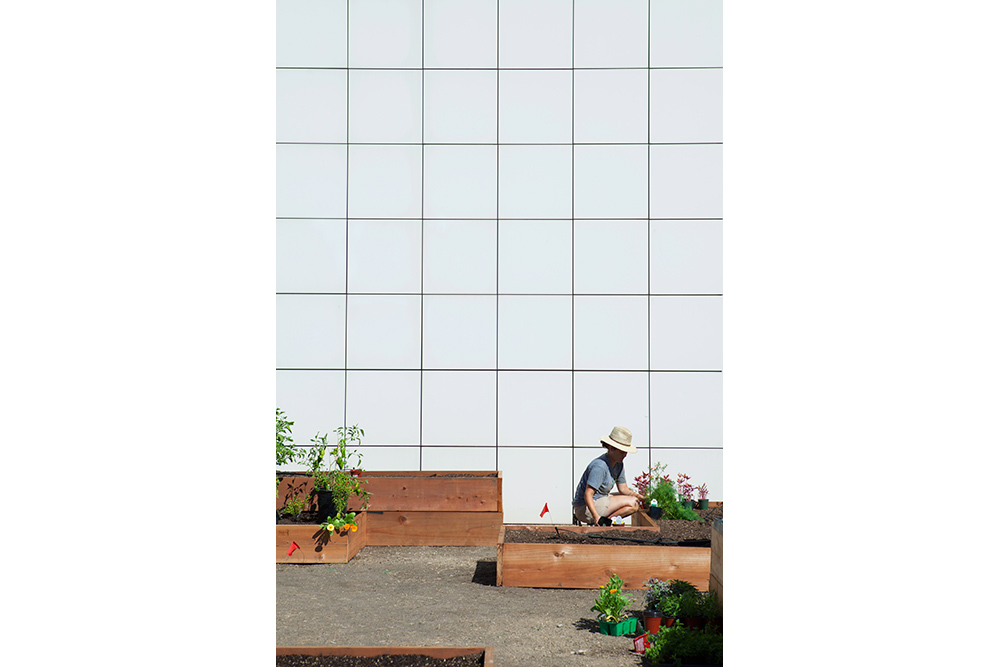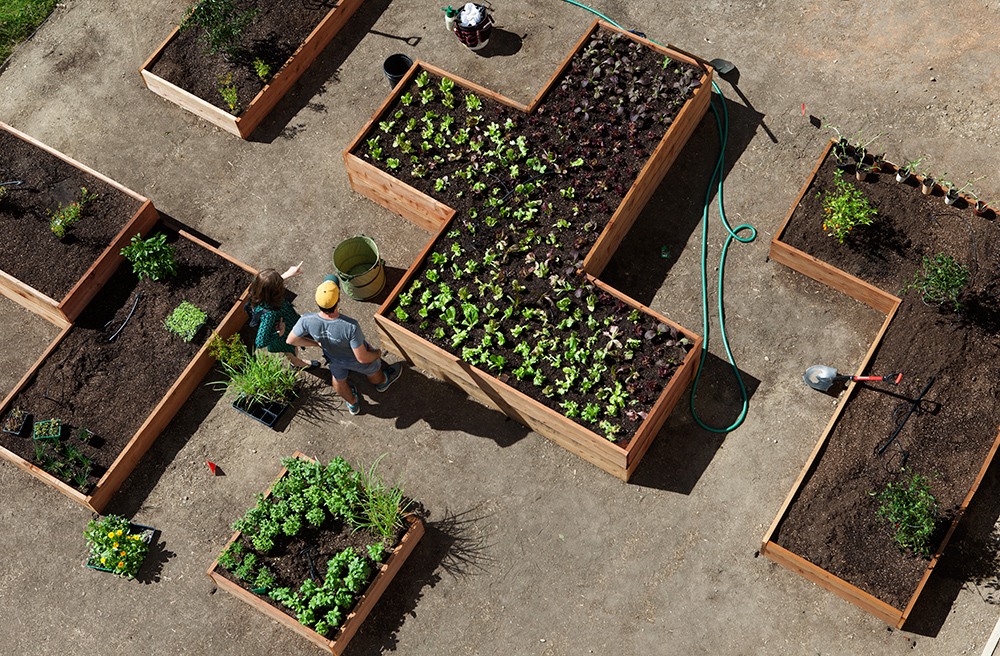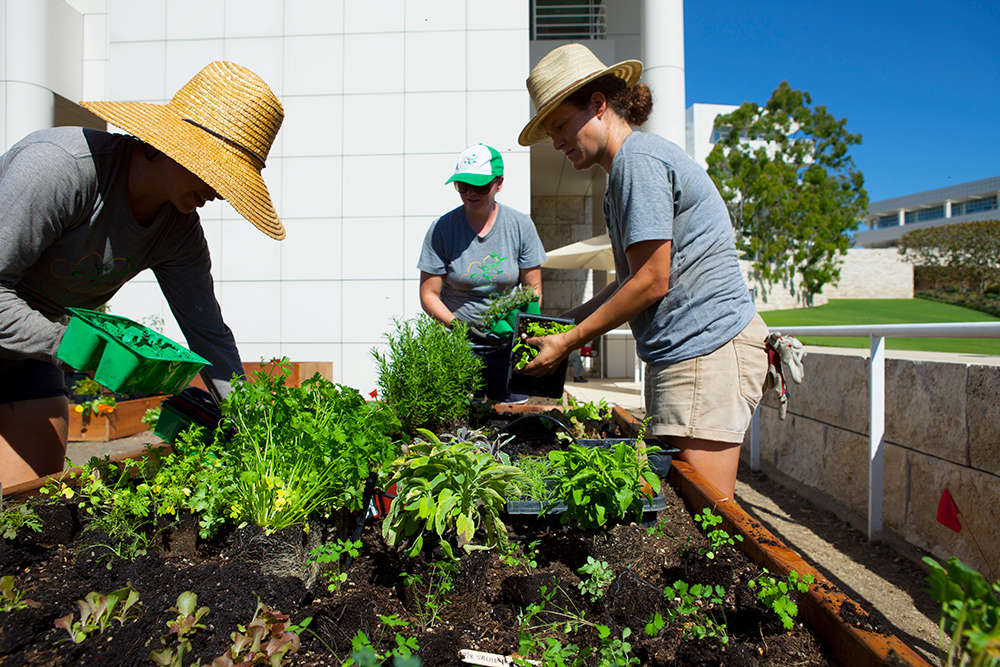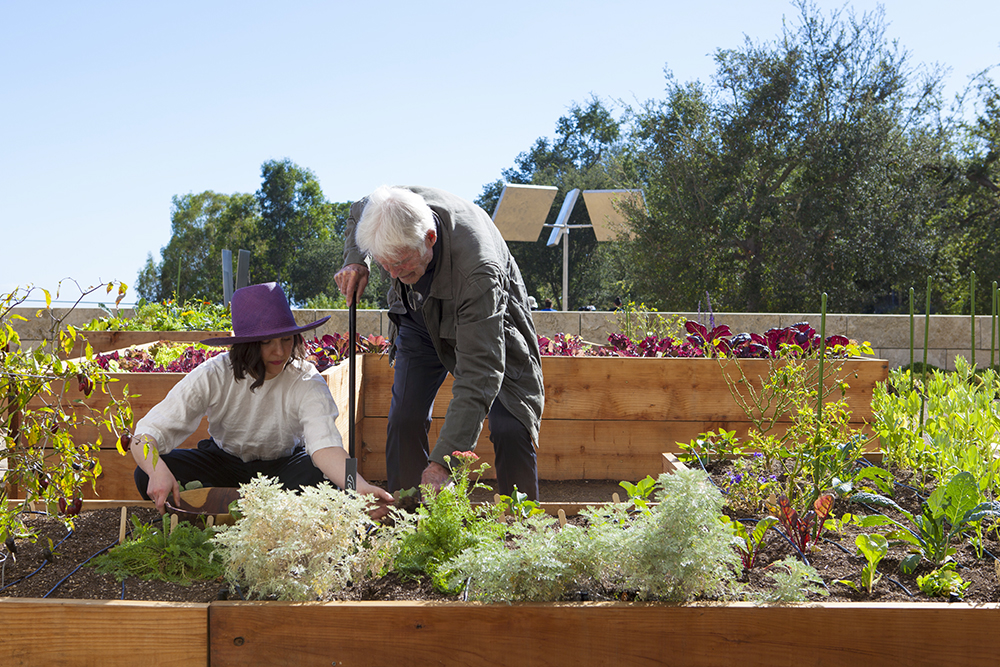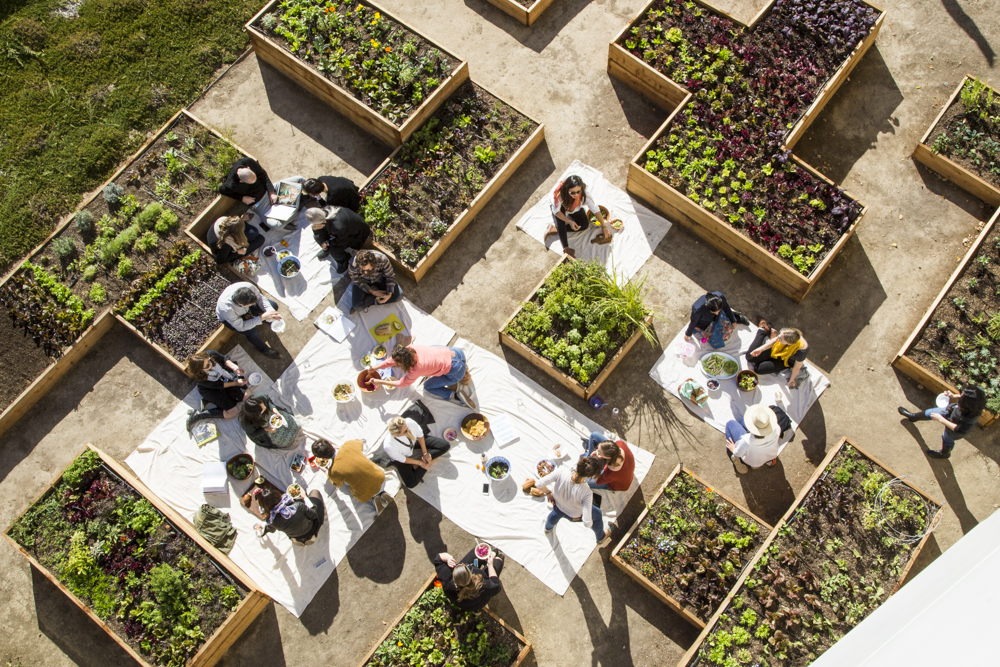The Salad For President Getty Salad Garden
POSTED UNDER
- Garden ,
- los angeles
Last summer, I built a Salad Garden on the roof of MoMA PS1, and invited artists whose work I admired to come and make a salad with me, do a performance, have a party. Now, the second installment of the Salad for President Salad Garden is thriving at the Los Angeles Getty Museum, and I am about to kick off a new season of West Coast programming. I am including my recent interview from the LA Times below. Stay tuned for LOTS of artist-made salads.
———————————————————————————————————————————————————————————
A Salad Grows at The Getty Center: Artist Julia Sherman On The Roots of Her Unusual Project
By Carolina A. Miranda
It’s no secret that a number of Getty Center visitors spend little time in the galleries and a lot of it in the photogenic gardens designed by artist Robert Irwin, meandering along the descending tree-lined walkway, through the bougainvillea arbor and around the geometric arrangement of azalea floats hovering over a vast, circular pool.
But wander over to the Getty’s lower terraces, where modern sculptures by Alexander Calder frame a view of the Pacific Ocean, and you will run into a more peculiar site: a vegetable garden. An organic, heirloom vegetable garden, to be exact.
This isn’t because the Getty has gone all back to the land. Like the surrounding landscapes, the garden is a work of art, of sorts: a collaboration between the Getty Museum’s Education Department and the New York-based artist and writer Julia Sherman, who writes the blog “Salad for President.”
The Getty Salad Garden, which will produce vegetables for a series of artist-driven events, will serve as a real-life counterpoint to a pair of food-themed exhibitions currently on view at the center: “The Edible Monument: The Art of Food for Festivals,” and “Eat, Drink, and Be Merry: Food in the Middle Ages and Renaissance.”
Sherman’s interest in salad started as a sidebar to her artistic practice, which consists of socially driven projects that she records via written texts, video or photography. (For example, she once got a group at a New York senior center to reenact the whole first episode of “The Golden Girls.” The resulting piece, she recalls, “was like ‘The Golden Girls’ on acid.”)
After receiving her MFA from Columbia in 2011, she began inviting artists and other cultural figures to make salads with her, sharing the recipes and the stories behind them on her blog.
“Salad for President” became such a success that the Museum of Modern Art’s experimental art center in Queens, PS1, invited her to plant a salad garden on the roof of the institution. Once the vegetables were harvested, Sherman approached Fluxus performance artist Alison Knowles to restage her 1962 performance piece “Make a Salad,” in which the artist makes a massive salad, then shares it with her audience. (Here’s video.)
Sherman took some time to chat about what she’ll be planting, why salad is universal and how the Getty project connected her with an L.A. architect who is obsessed with horseradish.
Aren’t salads a little twee? Why not stew?
Salad allows me to include all the artists that I want. This includes people who are ambitious cooks but also those who add oil and vinegar to something and call it salad. Everyone knows how to make one salad. It doesn’t have to be complicated. In fact, some of the best salads are only three ingredients.
What interest do they hold for you?
For me, making a salad is like keeping a sketchbook. It’s not about the final destination. And it connects with art in the way that you compose the ingredients. I also entertain a lot and salads are a big, colorful, simple, aesthetically pleasing way to feed a lot of people. As time has gone by, the definition of salad has become incredibly flexible. It could be a cocktail or a soup. But it’s about thinking of the components and how they come together.
You meet with artists and artisans and you ask them to share their a salad with you. What’s been one of the most memorable gatherings?
I just got back from a trip to Japan where I made a salad with the [indigo dye] artist Hiroyuki Shindo. I show up there and I ask him if he will make me a salad. And he was, like, “Are you crazy?” He was, like, “I’m having you here for a day, I invite you in, and you ask me to cook you lunch? You make the salad.” [Laughs.] So he picked the vegetables and I made the salad.
It was a really interesting experience because I realized how rooted in my own culture my approach to life and this project is — to have those expectations of intimacy or access is very foreign in a place like Japan.
I understand you will be planting rare seeds and 19th century varietals at the Getty Center. What can we expect in terms of ingredients?
We’re working with a company called Baker’s Seed and they specialize in really rare heirloom seeds. They go around the world and connect with people who save seeds and recover them. That’s one of the nice things about having your own garden, is being able to offer something unique. And if you’re going to go to all of this work to grow something, it might as well be something you can’t find anywhere else.
Right now we have dark purple mustard, we have salad burnet — I’m growing a lot of that. We’ll have carrot microgreens and shiso microgreens. The carrot microgreens, the green tastes like carrot. There will be chervil, bronze fennel, nasturtium. We have edible flowers, we have Johnny Jump-Ups, calendulas. There are purple jalapeños and fava beans and some rare varieties of lettuces, for sure.
I think we’re also doing spilanthes. The colloquial name is the “toothache herb.” [These] are super-cool because they make your mouth kind of numb. It’s a great party trick.
Is there anything inspired by the setting?
There’s this house on the Getty property; it’s just up the hill but it’s not open to the public. It’s the Trustee House. It’s used for private Getty events. When I saw it, I just fell in love with it — with the architecture. [The home was built in 1966] and it had this swimming pool that you could swim right into the living room. So I found the architect, Harry Gesner [a designer known for flamboyant, peaked rooflines, like the Wave House in Malibu].
Anyway, Harry has done all of these incredible things with compost and waste and I told him that he must be good at gardening. And he pointed out at the area around his house and said, “All of this was horseradish.” He would grow all of this horseradish and once a year he’d put on a gas mask and puree all of it. The fumes would become so intolerable his family would leave the house for several days. I asked him what he did with all of that horseradish. Horseradish is the kind of thing that you only use a tiny little bit of. Think of that jar of horseradish you have sitting in your refrigerator. And he said, “I just gave it all away.”
So I’m also growing horseradish and Harry and I are going to do an instructional video on how to bottle horseradish.
How are you tending to this garden? And what kinds of events can we expect?
I have a couple of very important collaborators. Farmscape Gardens is a company that does edible gardens in private residences and institutions, and they have taken it on and are tending it for me. There’s just no way I could have done it by myself. And my friend has a company called Terremoto Landscape and he designed the boxes and built them.
And we’re still in the process of figuring out the lineup. The garden is situated between the [Richard] Meier architecture and the Irwin garden, which are two opposing aesthetic directions. We’ve put a bench in the center of that, in the center of the garden, where I’ll be meeting with artists and doing all of the cooking.
The lineup includes some incredible people: [installation artist] Lisa Anne Auerbach, [performance artist] Emily Mast, Luke Fischbeck of Lucky Dragons. Also [multimedia artist] Julian Hoeber is confirmed. I give the artists a list of what’s ready to be picked and we go back and forth and come up with a recipe. It can be a conceptual gesture. It can be anything. Then we meet and make a salad.
Julia Sherman’s Salad Garden at the Getty will be growing through Jan. 11th. Public happenings and events will be announced on the garden’s webpage. 1200 Getty Center Drive, Brentwood, Los Angeles, getty.edu.

